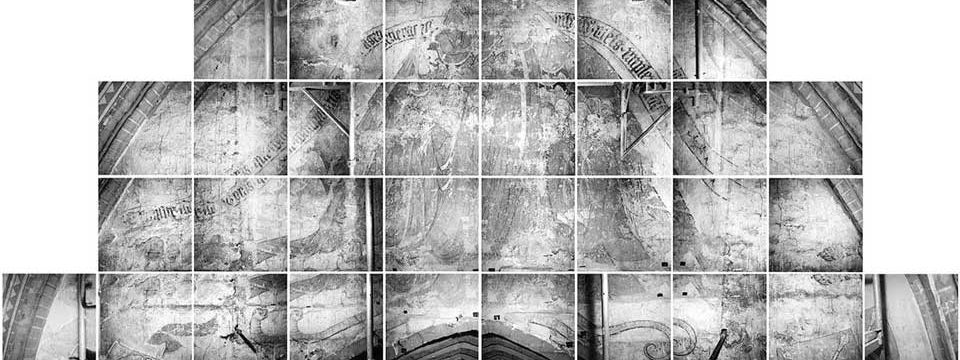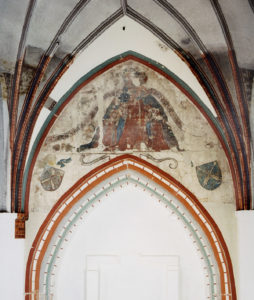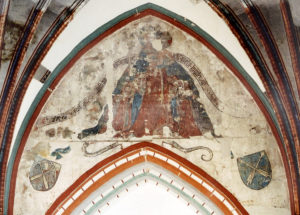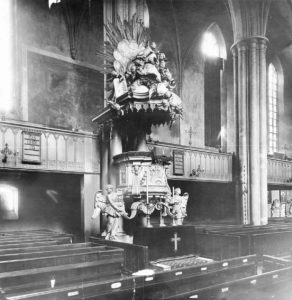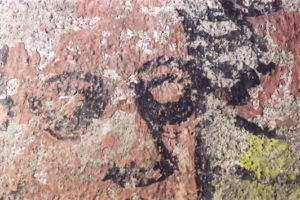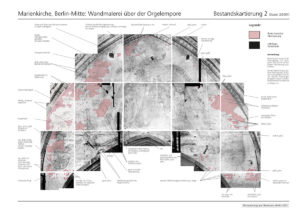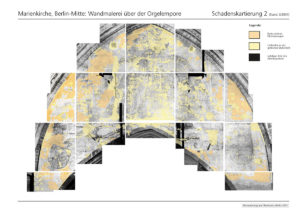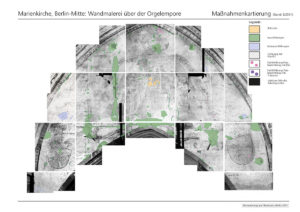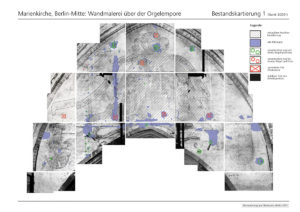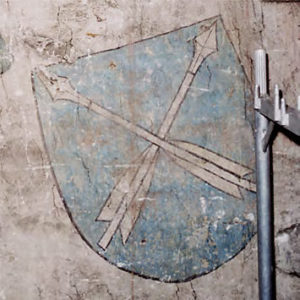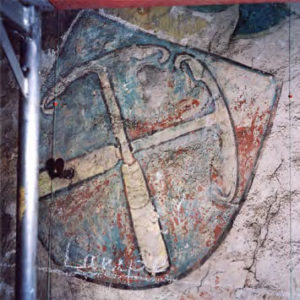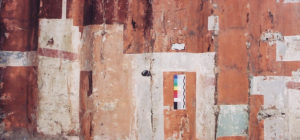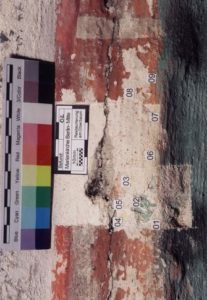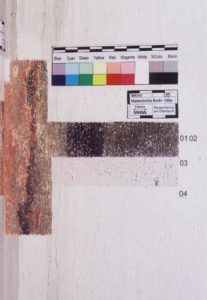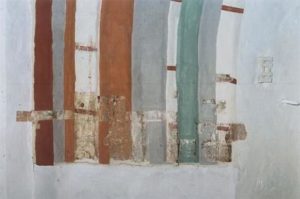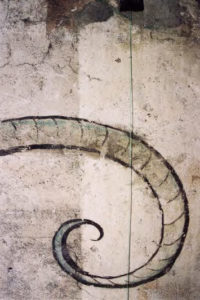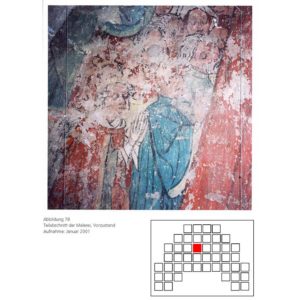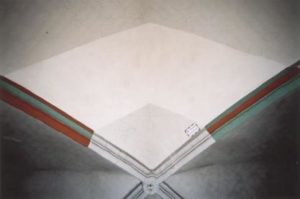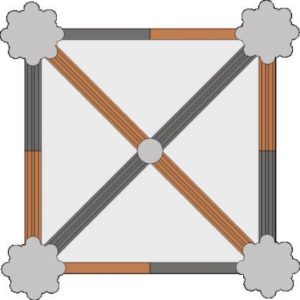St. Mary’s Church in Berlin-Mitte (Marienkirche) – Mural painting of the Virgin of Mercy
The Wall Painting of the Virgin of Mercy
Restorative Study and Conservation of the Virgin of Mercy in the St. Mary’s Church from the First Half of the 14th Century and Reconstruction of the Medieval Color Scheme of the Surrounding Arch Architecture
The existence of a Gothic wall painting on the west wall of the nave above the organ loft has been known for a long time. However, since it was located behind the church organ, this medieval wall painting, as significant as the known Berlin Dance of Death (Totentanz) painting in St. Mary’s Church, was only partially visible for many decades and thus forgotten by all but a few initiates.
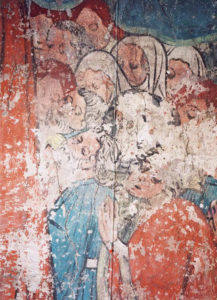 With the renovation of the organ and the associated dismantling at the beginning of 2001, there was for the first time an opportunity to view the painting in its entirety and consider it from a restorative perspective. In addition to the restorative assessment, art-historical and script-related questions were clarified. The painting from the first half of the 14th century depicts an over-life-sized Virgin of Mercy with the Christ Child on her left arm. Under her spread cloak, representatives of the estates huddle together seeking protection. At the feet of the Madonna is a bleeding snake. Alongside an additional inscription on a scroll, two as yet unidentified house marks or coats of arms are located in the lower area of the wall. The scroll reads in Gothic minuscule from the Book of Sirach, Chapter 24, Verse 26: “Come unto me, all ye that be desirous of me, and fill yourselves with my fruits.” Remarkably, the rediscovery of the original multicolor of the arches above the painting and on the vault ribs was also noteworthy. As part of the restoration, the original colors associated with the painting were also reconstructed. “Come unto me, all ye that be desirous of me, and fill yourselves with my fruits”
With the renovation of the organ and the associated dismantling at the beginning of 2001, there was for the first time an opportunity to view the painting in its entirety and consider it from a restorative perspective. In addition to the restorative assessment, art-historical and script-related questions were clarified. The painting from the first half of the 14th century depicts an over-life-sized Virgin of Mercy with the Christ Child on her left arm. Under her spread cloak, representatives of the estates huddle together seeking protection. At the feet of the Madonna is a bleeding snake. Alongside an additional inscription on a scroll, two as yet unidentified house marks or coats of arms are located in the lower area of the wall. The scroll reads in Gothic minuscule from the Book of Sirach, Chapter 24, Verse 26: “Come unto me, all ye that be desirous of me, and fill yourselves with my fruits.” Remarkably, the rediscovery of the original multicolor of the arches above the painting and on the vault ribs was also noteworthy. As part of the restoration, the original colors associated with the painting were also reconstructed. “Come unto me, all ye that be desirous of me, and fill yourselves with my fruits”
For the development of the conservation concept, extensive investigations into the existing conditions and the historical art and painting techniques in St. Mary’s Church were carried out under the direction of Jörg Breitenfeldt and Uwe de Maiziere. The evaluation of written sources on the building’s history was conducted with the participation and advice of Prof. Dr. Ernst Badstübner and by the art historians Birgit Neumann-Dietzsch and Michaela van den Driesch. The investigations into the inscription were carried out by the historian Ms. Voigt from the long-term project “The German Inscriptions” at the Berlin-Brandenburg Academy of Sciences.
As a result of these investigations, it was determined that the painting was uncovered during the church’s redesign at the end of the 19th century by the well-known Berlin architect Hermann Blankenstein (1829-1919). Here, the figurative Baroque overpainting (from 1723) was removed, except for a few remnants. The original painting was executed in secco technique on a previously whitewashed wall. Although the painting was slightly damaged both by the exposure at that time and the later installation of the organ, it is still well preserved today. In its largest extent, it measures 6×6 m.
The restoration measures were purely conservational in nature and focused mainly on sensitively securing the medieval substance and the remaining traces of the Baroque overpainting. The removal of dirt from the painting significantly improved its legibility. The mural was secured by replacing damaged fillings, closing cracks, backfilling hollow areas, and finally by consolidating fragile areas of the paint layer. The conservation of the painting was completed in the summer of 2001.
Project Lead
Jörg Breitenfeldt
Execution Period
January 2001 – July 2001
Client
Berlin State Office for Monument Protection

